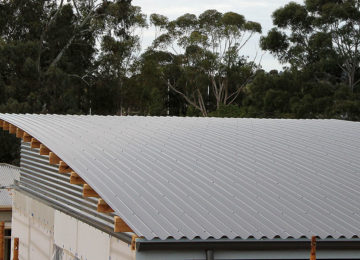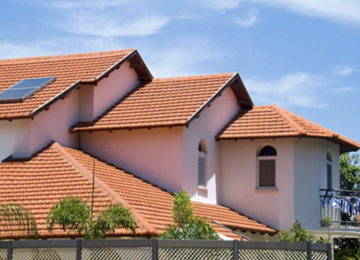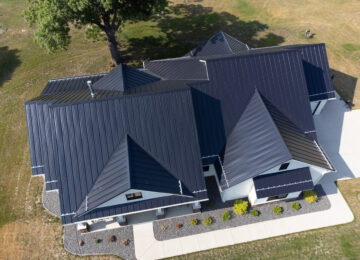A home’s roof is its first line of defense against the elements. One of the most common types of roofing in the United States is shingle roofing, with asphalt shingles covering over 70% of all single-family homes, according to a study by the Asphalt Roofing Manufacturers Association. Despite their popularity, shingle roofs are not invincible. Over time, due to various factors like harsh weather conditions and aging, shingles can become damaged or go missing.
The loss of a few shingles may seem minor, but it can lead to severe problems if not addressed promptly. Here, we’ll delve into the risks of missing roof shingles and why they should always be addressed.
Increased Risk of Leaks and Water Damage
One of the primary functions of roof shingles is to divert water away from the roof and the rest of the house. When shingles are missing, this protective barrier is compromised. Water can seep through the exposed areas, leading to roof leaks.
HomeAdvisor says homeowners spend an average of $900 to repair a roof leak. However, the cost can be significantly higher if the leak leads to additional damage, such as mold growth, ruined insulation, or structural issues.
Furthermore, the Insurance Information Institute reports that in 2018, water damage and freezing accounted for almost 24% of homeowners insurance claims. This underscores the prevalence and potential severity of water-related injury in homes.
Accelerated Roof Deterioration
Missing shingles expose the underlayment and decking of your roof, which are not designed to withstand direct exposure to sunlight, rain, or snow. Over time, this can lead to accelerated deterioration of these components, shortening the lifespan of your roof.
Increased Energy Costs
Roof shingles also play a crucial role in a home’s energy efficiency. They help regulate indoor temperature by providing insulation and reflecting sunlight. When shingles are missing, your home loses some of its insulating ability, increasing energy costs. The Department of Energy estimates that good roofing practices can reduce a home’s cooling costs by up to 15%.
Pest Infestations
Missing roof shingles can also create entry points for pests. Small animals like squirrels or birds may enter the attic, while insects can infiltrate smaller gaps. Once inside, these pests can cause further damage to your home and can be difficult and costly to remove.
Decreased Property Value
A well-maintained roof is a valuable asset when it comes to property value. Missing shingles can negatively impact the aesthetic appeal of your home, potentially deterring buyers and decreasing your property’s value.
How to Address Missing Shingles
If you notice missing shingles on your roof, acting quickly to mitigate the risks outlined above is critical. Here are some steps to take:
- Assess the Damage: Determine the extent of the damage. Are only a few shingles missing, or is it a widespread problem? Is there evidence of water damage or other issues?
- Contact a Professional: If the damage is extensive, it’s advisable to contact a roofing professional. They can provide a thorough assessment and recommend the best course of action.
- Repair or Replace: Depending on the extent of the damage, the roofer may suggest repairing the affected area or replacing the entire roof.
- Regular Maintenance: Regular roof maintenance is vital to prevent future issues. This includes cleaning gutters, trimming overhanging branches, and regular inspections.
In conclusion, missing roof shingles may seem minor, but they can lead to significant problems if not promptly addressed. By understanding the risks and taking swift action, homeowners can protect their homes, save money, and maintain their property value.










